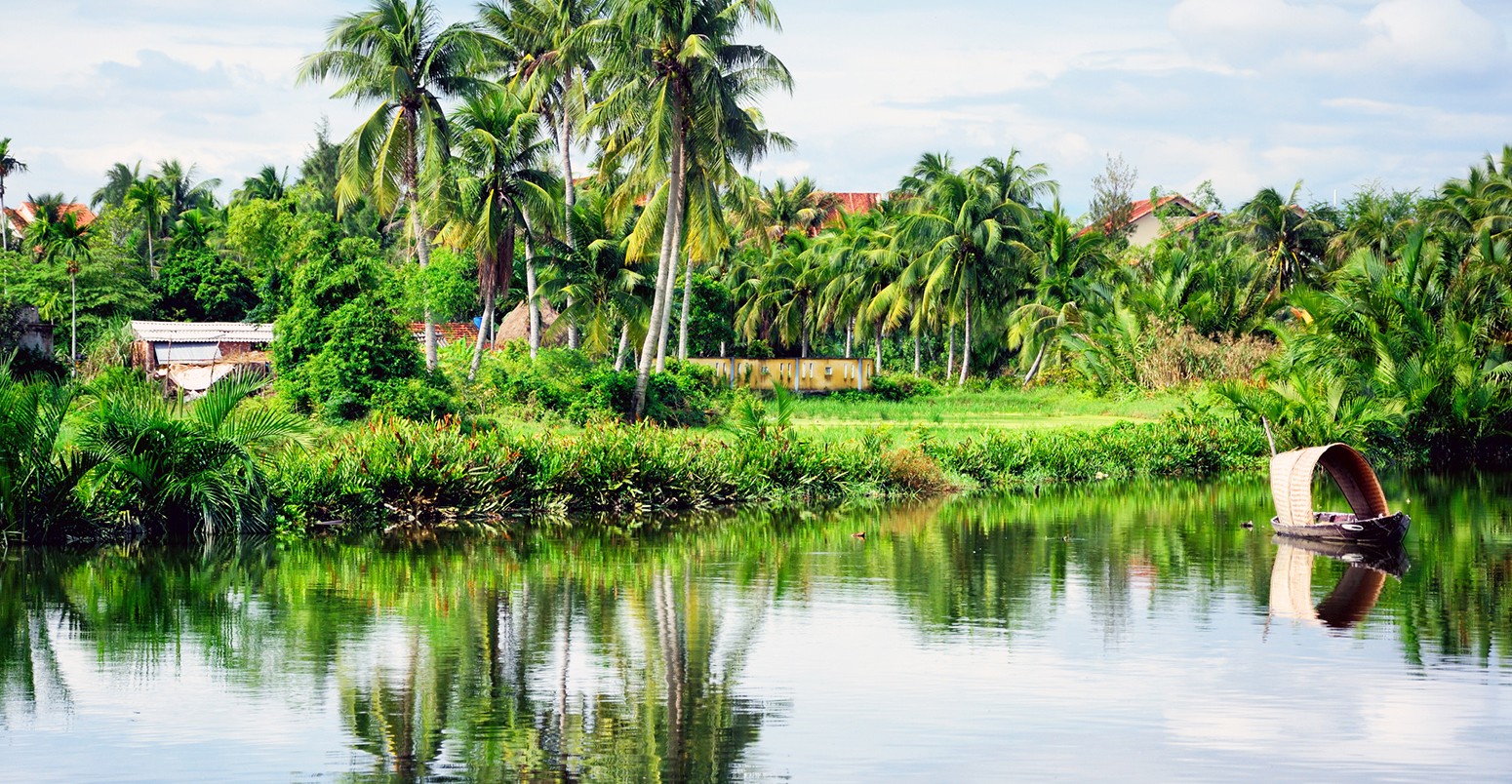
Shifting tropical cyclones increases threat to sinking Mekong delta
Robert McSweeney
10.19.16Robert McSweeney
19.10.2016 | 6:00pmWith their furious winds, torrential rains and deadly storm surges, tropical cyclones are usually known for their destructive power.
But new research, published in Nature, discovers that they have an important constructive impact on river deltas.
The study of the Mekong delta in southeast Asia finds that heavy rains brought by tropical cyclones help sweep sediment into the river system, ultimately helping keep the low-lying delta topped up with soil.
However, scientists predict that tropical cyclones in the region will shift their tracks north and eastwards as the climate warms, taking them away from the Mekong. The reduced sediment supply from cyclones – combined with continued human development in the river basin upstream – could leave the delta at risk from being “drowned” by rising seas, the researchers warn.
Delta force
As a river approaches a body of water, such as an ocean or lake, it slows down and deposits much of the sediment it is carrying. Over many years, enough sediment can accrue that new land is formed – this is a delta.
Some of the world’s largest rivers have created huge deltas, such as the Mississippi in the US, the Ganges-Brahmaputra in Bangladesh and India, and – the subject of the new study – the Mekong in southeast Asia. In total, approximately half a billion people around the world live on or near river deltas.
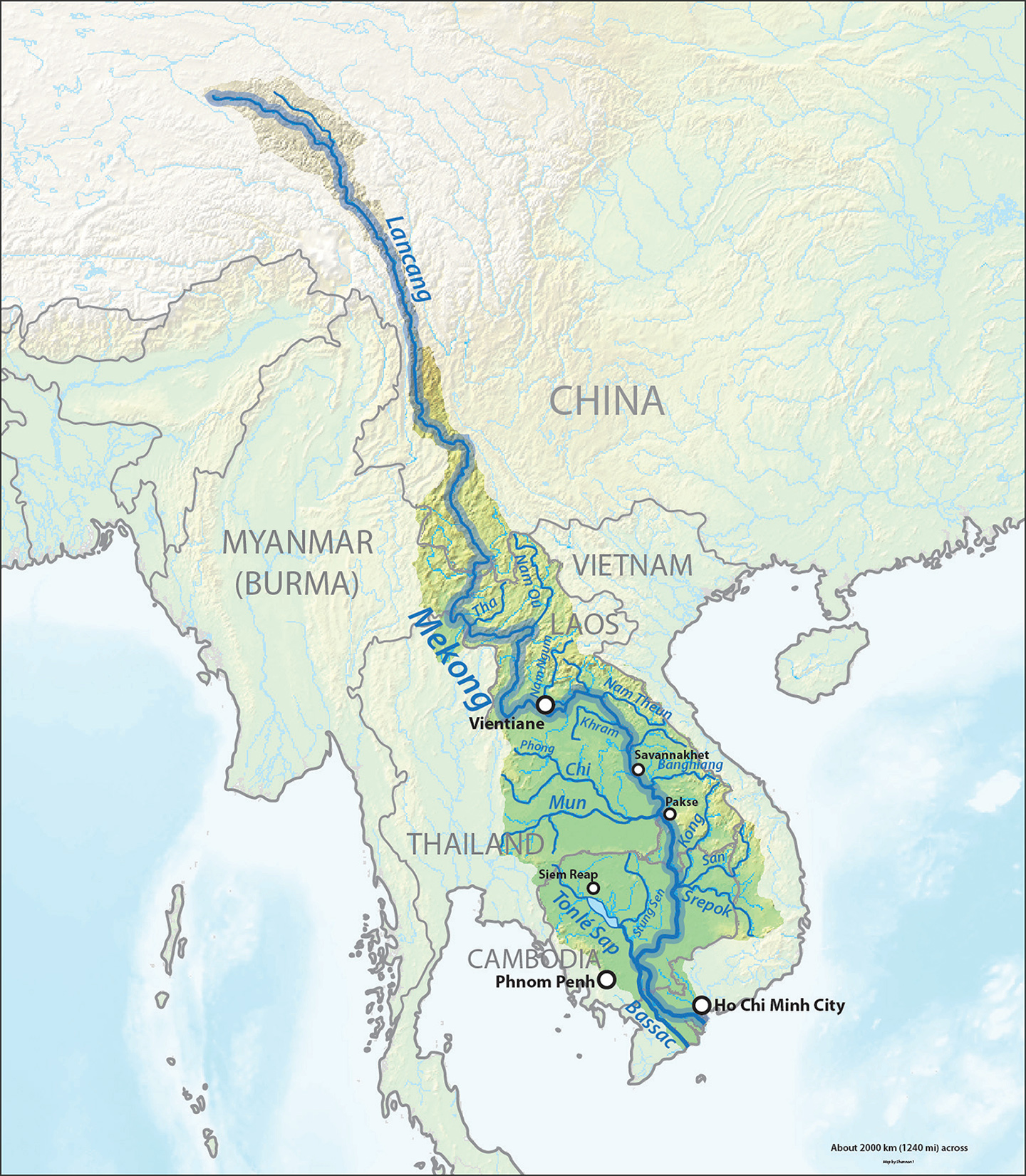
The Mekong river basin – the delta itself is where the river meets the sea. Credit: Shannon1 via Wikimedia Commons.
A delta naturally subsides under its own weight as the sediment compacts. This means it relies on the constant addition of new sediment from the river to stay above sea level.
But human development can play havoc with this natural process, says lead author Prof Stephen Darby, professor of physical geography at the University of Southampton. For example, in the past, deforestation and other land-use changes have accelerated soil erosion, thus increasing the supply of sediment to deltas.
In recent decades, however, how humans are managing rivers upstream is causing the opposite problem, says Darby. He tells Carbon Brief:
Overall, more than 70% of the world’s large deltas are under severe threat from rising sea levels – in part down to a decline in supply of sediment.
And the new study says that tropical cyclones also play an important – but diminishing – role in supplying sediment to the Mekong.
Rainfall runoff
Scientists know that heavy rainfall helps deliver sediment downstream to a delta. As rain falls on the land, it saturates the soil. Once the rainwater can no longer soak into the ground, it forms “runoff” – rainwater that collects on the land surface and runs into rivers – carrying sediment with it.
In September 2013, Darby and his colleagues were in the Mekong collecting data to investigate how the monsoon rains affect the supply of sediment to the delta.
Then, during their fieldwork, two tropical cyclones crossed over the Mekong basin further upstream. This caused a large flood, Darby says:
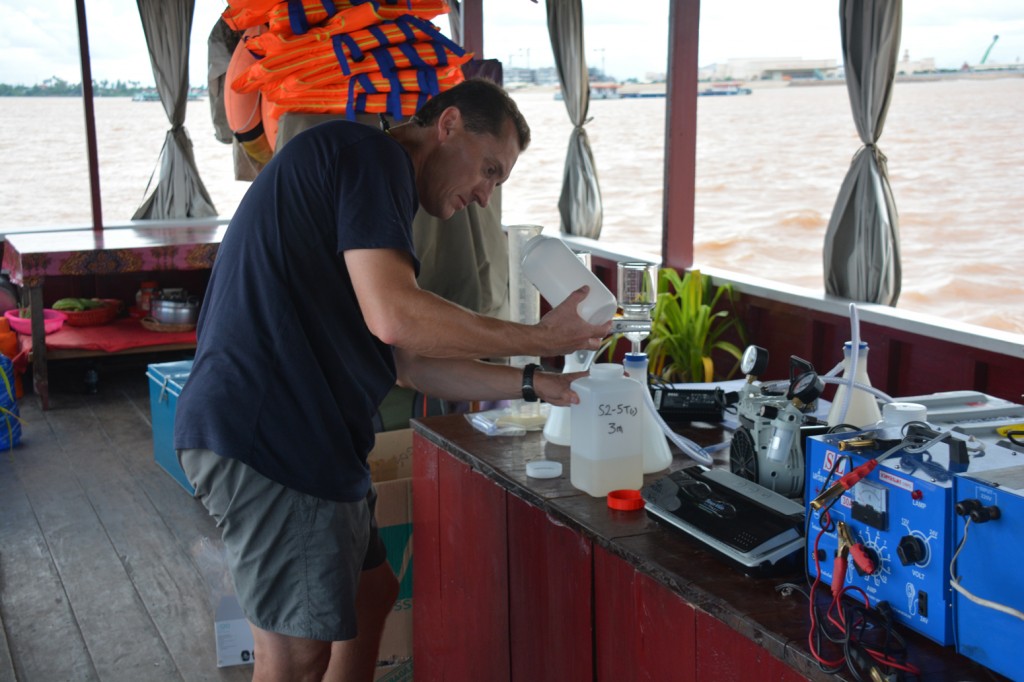
Prof Steve Darby processing suspended sediment samples on board the RV Stelar, a converted tourist boat on the Mekong river. Credit: Prof Jim Best
Using observed data of sediment loads in the Mekong going back to 1981, and a hydrological model of the whole basin, the researchers calculated how much sediment is carried to the delta because of the torrential rainfall brought by tropical cyclones.
The resulting figures were “rather higher than expected,” says Darby:
The results may have been surprising because tropical cyclones deliver just 2-5% of the Mekong’s annual rainfall. But this translates into 14-29% of its annual runoff, the paper notes. This is partly because tropical cyclones tend to occur during, or just after, the monsoon season. This means the ground is already very wet, and so additional rainfall is more likely to generate runoff.
Sediment load
However, the data did not only reveal the importance of tropical cyclones to sediment supply to the delta – it also showed that their impact was diminishing.
Of the 56m tonne decline in overall sediment load in the Mekong between 1981 and 2015, 33m tonnes – 61% – was down to a reducing contribution from tropical cyclones.
You can see this in the chart below, which shows overall sediment load of the Mekong (circles) and the amount caused by tropical cyclones (squares).
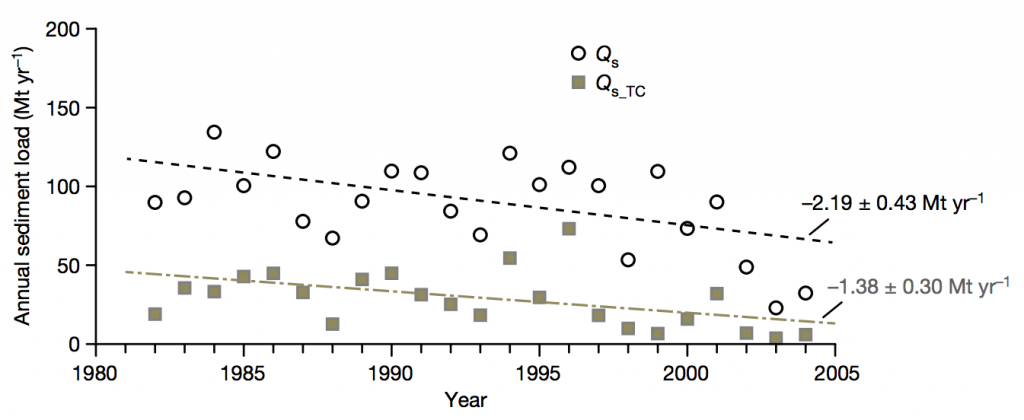
Time series of annual sediment load in Mekong river at Kratie (most downstream site included in the study). Circles show total sediment load and squares show the load attributable to tropical cyclones (in million tonnes per year). Source: Darby et al. (2016)
The researchers know that this decreasing contribution is because tropical cyclones are delivering less rainfall to the Mekong than they were several decades ago. But it’s impossible to say definitively whether this is down to human-caused climate change or natural variability, says Darby:
But a lessening impact of tropical cyclones on the Mekong is consistent with what models project under a warming climate, Darby notes:
This means that the influence of tropical cyclones is likely to contribute to further declines in sediment supply in the Mekong, Darby adds:
Beyond the Mekong
The findings have “profound implications” for the 20 million people that live on the Mekong delta, Darby says:
But the Mekong isn’t the only river delta that’s in the path of tropical cyclones, notes Darby, other major deltas, such as the Ganges, Yangtze, and Mississippi, are, too.
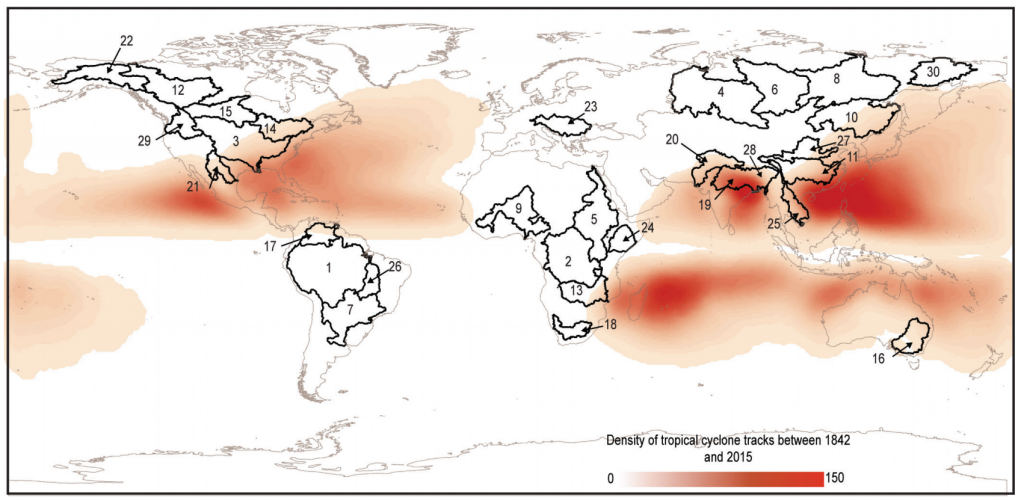
Locations of the world’s 30 largest rivers (numbers show ranking by size of drainage area). Red shading shows the concentration of all tropical cyclone tracks between 1842 and 2015. Source: Darby et al. (2016)
While the impacts of changing tropical cyclones will be specific to each delta, their study shows that the effects need to be considered, he warns:
Darby, S. E. et al. (2016) Fluvial sediment supply to a mega-delta reduced by shifting tropical-cyclone activity, Nature, doi:10.1038/nature19809


